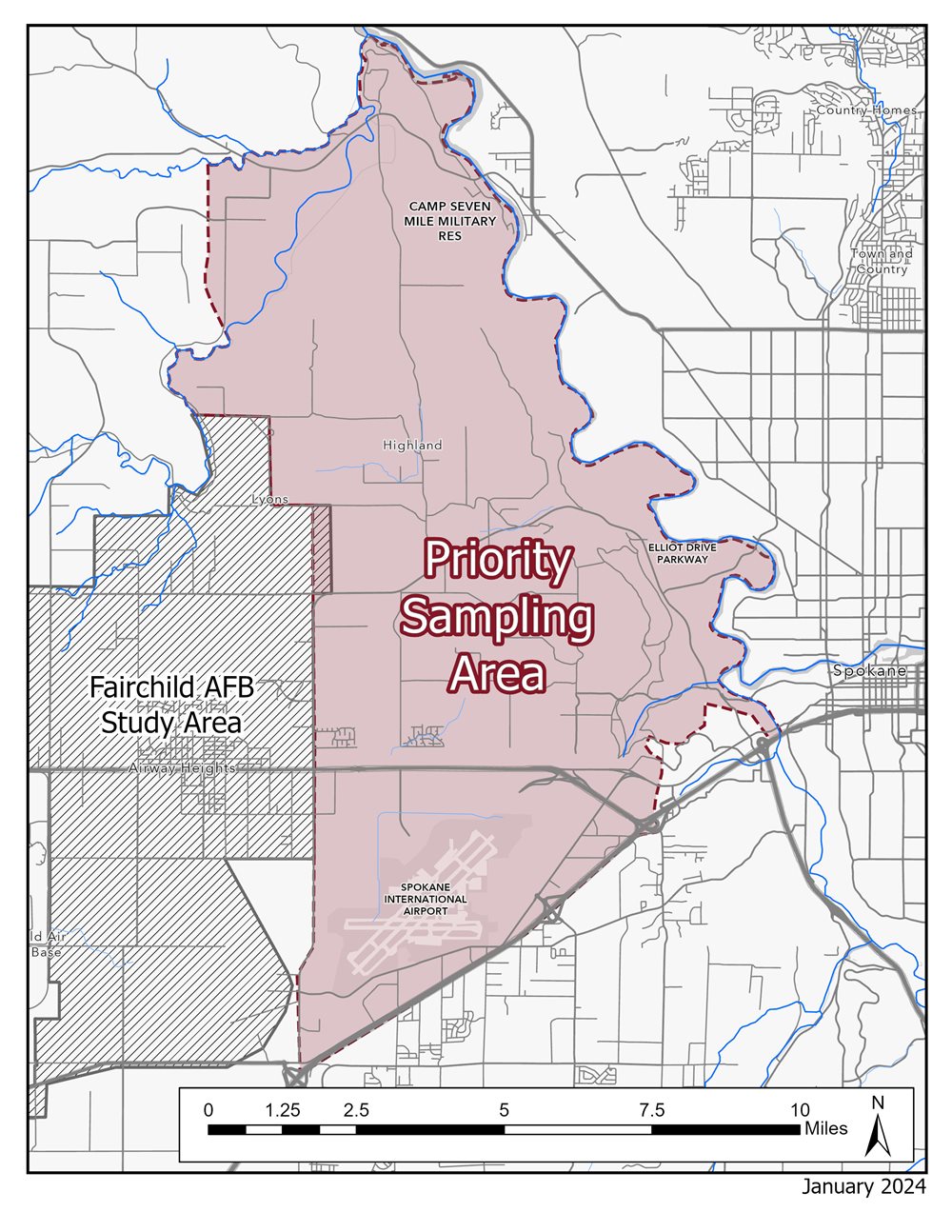PFAS in West Plains private wells
To ensure people are drinking safe water, we partnered with the EPA to sample 307 private wells in the priority sampling area at no cost to residents during March 2024. We appreciate everyone's participation in this sampling, and all results should be received by Friday, May 3.
Of the 307 samples taken, 172 wells, or 56%, had PFAS above safe drinking water standards. We are providing bottled water to these homes upon request.
We invite you to share your results with us, even if PFAS wasn't detected in your water. The results will help us better understand where PFAS came from and where it is going in the West Plains. The EPA did not share your drinking water results with us to protect your personally identifiable information (your name, address, and phone number) under the Privacy Act.
Sampling results from 307 private wells
Thank you to everyone who participated in the no-cost sampling for PFAS in drinking water in the northeast West Plains area. We are compiling and summarizing the data collected to generally show areas of contamination without revealing individual well results to help inform the community and cleanup efforts.
| Sample result type | Number of locations | Percent of locations |
|---|---|---|
| Wells that don't have PFAS | 91 | 30% |
| Wells with PFAS below drinking water standards | 44 | 14% |
| Wells with PFAS above drinking water standards | 172 | 56% |
| Total | 307 | 100% |
Public meeting, 6:30 p.m. on May 21 at the Hub, Airway Heights
Ecology and the EPA are hosting a meeting to review and discuss the sampling results and offer assistance with next steps. You will also have the option to print your results at the meeting.
- 6:30 p.m., Tuesday, May 21, 2024
- The Hub, 12703 W 14th Avenue, Airway Heights
Share your results to receive no-cost bottled water and aid our investigation
Ecology invites you to share your results with us, even if PFAS wasn’t detected in your water. The results will help us better understand where PFAS came from and where it is going in the West Plains.
Sharing your results is completely voluntary. Data you provide to Ecology may be subject to public records requests and disclosure.
How to request bottled water
If your results are above safe drinking water standards, Ecology will provide no-cost bottled water delivered monthly to ensure people have safe drinking and cooking water.
When you submit your sample results to Ecology, please include the necessary information to set up your bottled water delivery:
- How many people live in the household
- Contact person
- Phone number
- Delivery address
The Washington Department of Health is working on providing point-of-use filtration (POU) systemsto replace bottled water. Bottled water and POU filters can help until investigation and cleanup of PFAS sources provide more permanent solutions, such as whole-house treatment systems paid for by the party responsible for the contamination.
How did Ecology choose the priority sampling area?
We selected the priority sampling area based on our understanding of groundwater flow direction and the sample results people have shared with us so far. We understand that groundwater flows north to northeast in this area. As a result, the priority sampling area did not focus south of Interstate 90. Lastly, we had very limited data from the priority sampling area and needed initial information to help better define PFAS contamination.
My well wasn't sampled. What can I do?
If the address you provided wasn’t in the priority sampling area or you didn't sign up before the end of March 2024, then unfortunately we don’t plan to sample your drinking water at this time. However, please continue to visit this webpage and join our West Plains PFAS updates email list for the most up-to-date information about contamination sources, work toward long-term solutions, and links to other helpful resources.
You may go through an accredited laboratory to have your water tested for PFAS. There are two test methods. EPA method 533 tests for 24 PFAS. EPA method 531.7 tests for 18 PFAS. Both will detect PFAS that have a drinking water standard.
You also may choose to use bottled water for drinking and cooking, or to purchase a POU filter. Information to help you make this decision is in the video below.
Related links
Contact information
Erika Beresovoy (she/her)
Public Outreach Coordinator
WestPlainsPFAS@ecy.wa.gov
509-385-2290


